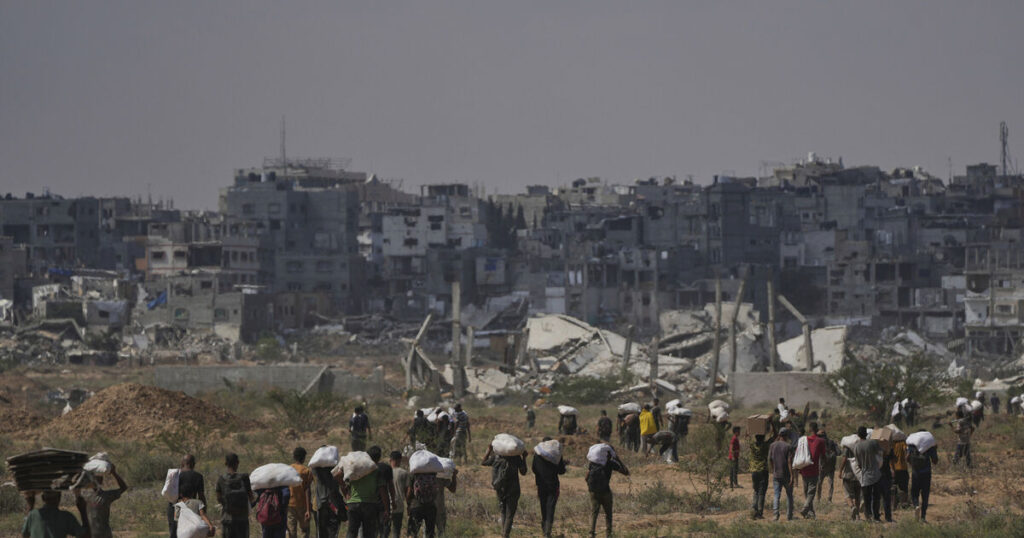Dozens of Palestinians were killed or wounded on Monday as desperate crowds headed toward food distribution points and airdropped parcels in the Gaza Strip, according to witnesses and local health officials.
Israel’s blockade and military offensive have made it nearly impossible to safely deliver aid, contributing to the territory’s slide towards famine nearly 22 months into the war with Hamas.
Aid groups say Israel’s week-old measures to allow more aid in are far from sufficient.
Families of hostages in Gaza fear starvation affects them too, but blame Hamas.
Several hundred Palestinians have been killed by Israeli fire since May while heading toward food distribution sites and aid convoys, according to witnesses, local health officials and the United Nations human rights office.
The military says it has only fired warning shots and disputes the toll.
As international alarm has mounted, several countries have airdropped aid over Gaza.
The UN and aid groups call such drops costly and dangerous for residents, and say they deliver far less aid than trucks.
Many food parcels dropped by air have splashed into the Mediterranean Sea or landed in so-called red zones from which Israel’s military has ordered people to evacuate.
In either case, Palestinians risk their lives to get flour and other basic goods.
On Monday, Palestinians cheered as pallets of aid were parachuted over Zuweida in central Gaza. Associated Press footage showed a desperate scramble when the parcels hit the ground, with hundreds of people racing toward them.
Fistfights broke out and some men wielded batons.
“I wish they would deliver it through the (land) crossings,” Rabah Rabah said earlier as he waited for the airdrop.
“This is inhuman.”
At least one parcel fell on a tent where displaced people had been sheltering, injuring a man who was taken to a hospital. His condition was not immediately known.
At least 16 people were killed late on Sunday near the Israeli-controlled Zikim Crossing, the main entry point for aid to northern Gaza, according to records at Shifa Hospital in Gaza City, which showed that more than 130 people were wounded.
The circumstances were not immediately clear, but the crossing has seen several shootings in recent days that witnesses and health officials blamed on Israeli forces.
There was no immediate comment from the military.
At least 10 people were killed as thousands waited for aid trucks in the Morag Corridor, which the Israeli military carved out between the southern cities of Khan Younis and Rafah.
Mohammed al-Masri, who was among the crowds, said Israeli forces opened fire when a group of young men tried to make their way to the front.
“The occupation forces shot many people in the head and in the back,” he said, adding that he saw four wounded people, one motionless on the ground.
Nasser Hospital in Khan Younis said it received 10 bodies from Morag and another five who were killed near an aid site in southern Gaza run by the Gaza Humanitarian Foundation, an Israeli-backed American contractor.
GHF said there were no violent incidents at or near its sites. It said a new UN route runs near two of its sites in the south and has drawn large crowds of people who unload the convoys.
GHF says its contractors have only used pepper spray or fired warning shots on a few occasions to prevent deadly crowding since it opened four sites in May.


